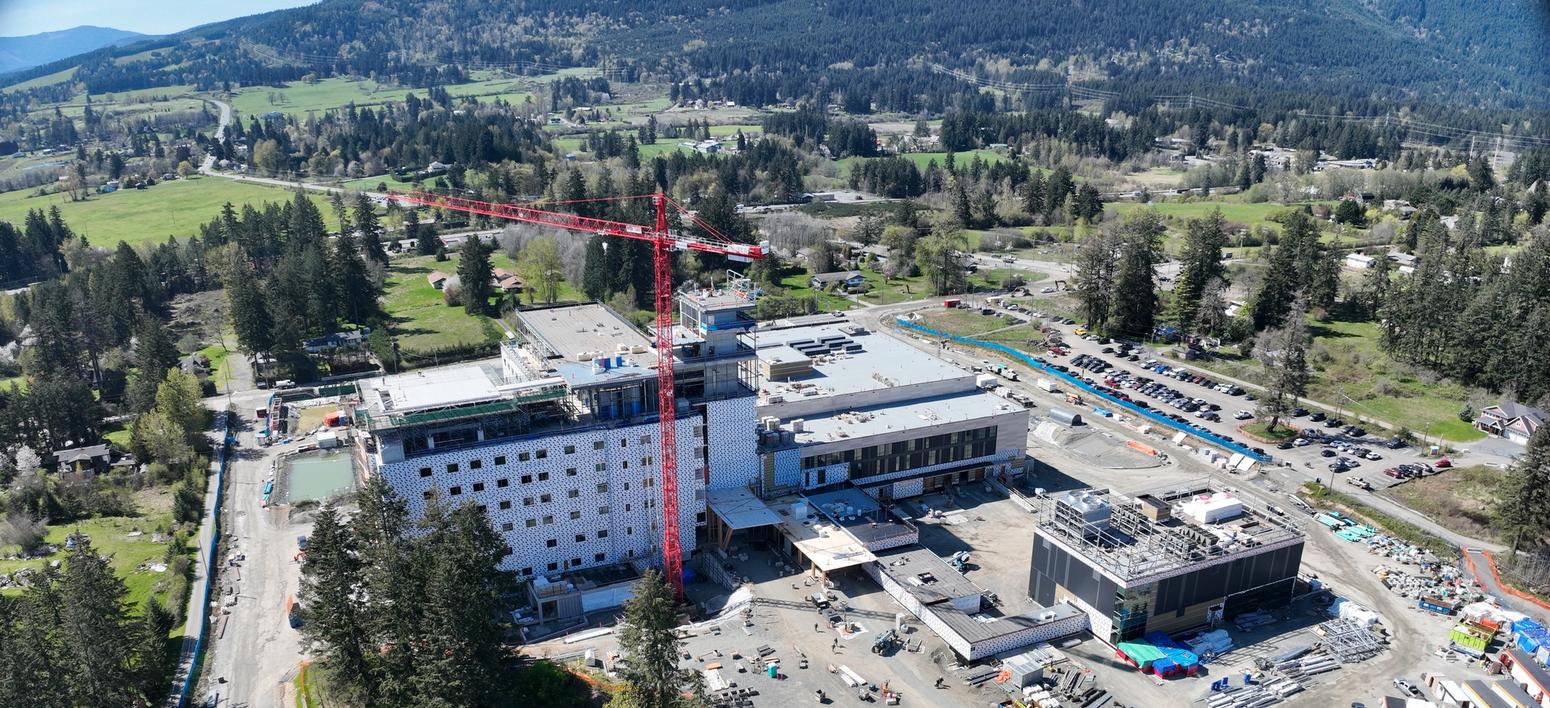News
Patent Pending: EllisDon's Innovative Crane Climb at CIBC SQUARE
At EllisDon, there’s nothing we love more than collaborative innovation. It’s a point of pride, deeply embedded in our culture and values. Known for our creative problem-solving abilities, we possess an unparalleled capacity to navigate challenges and complexity while maintaining the trust and vision of our clients.
An excellent example of this entrepreneurial mindset is the innovative crane climbing technology developed by the talented engineers within our Construction Sciences team to build the CIBC Tower at 141 Bay Street.
“It was an incredible undertaking,” said Phil Jones, Vice President, Engineering and Logistics, EllisDon. “Space limitations, unfavourable wind directions, and the unique structural design of this project, meant we needed to get creative. So, we developed a first-of-its-kind, tailored solution that is more efficient, safer, and has set a new benchmark for innovation in the industry.”
The Challenge
When it comes to climbing the Comedil CTL-630 tower crane, there are two traditional methods: climbing the crane externally with a climbing cage and tiebacks to stabilize the growing building or climbing the crane inside the building using each recently cast floor to support the crane as it moves higher and higher.
For 141 Bay Street, the crane had to remain at the top of the building during construction to support later portions of the project without impacting other work below. Additionally, the positioning of the project overhanging the railway corridor provided limited space for locating the crane relative to the heavy steel pieces. The only option was to use the building’s elevator shafts. The question was how to integrate all these challenges into one solution.
The Solution
To address the technology gaps, our Construction Sciences team developed a new way to climb the crane:
- By using tension (pulling), rather than the traditionally used compression (pushing), the team was able to lift the crane two floors with a single stroke of a hydraulic cylinder.
- The climbing system was placed above the bottom supporting frame, reducing the portion of the elevator shaft occupied by the crane.
- The system was designed so that many parts could be removed from the crane once it reached the top of the building, allowing it to remain in place without interfering with the construction and operation of the high-rise elevators.
- The major components are removable and modular, meaning they are simple to dismantle and can be used for future projects, without sacrificing stability or safety.
The Benefits
- It’s safer – instead of casting anchors into the building’s walls, the crane is supported by feet bearing directly onto the walls decreasing the potential for support failure and ultimately increasing safety.
- It’s faster – instead of two days and the requirement to shut down the crane between jumps, this system takes four to five hours and can be completed in an evening, ready for work again in the morning.
- It’s timely – the densification of cities requires this kind of innovation to keep up with growing demand and we anticipate significant opportunities to use this technology going forward.
Dedication and Collaboration
While the innovation is EllisDon’s, it is not an approach that would have been possible without the complete buy-in of the project team. “We came in with an idea, but it’s the whole team from our equipment division and on-site teams to our vendors, consultants and subcontractors that made it possible. We needed everyone to work out the details and execution and everyone stepped up,” said Jones.
Innovation, dedication and collaboration, form the bedrock of EllisDon’s values and define the quality we bring to every project. Instead of accepting the constraints of the construction industry and crane climbing technology, we leveraged these values to develop a solution that has won an award and has a patent pending. The ingenuity and cooperation that made this possible on a project that stands as one of EllisDon’s most complex and challenging to date, exemplifies our ongoing commitment to pushing the boundaries of what’s possible in construction.







